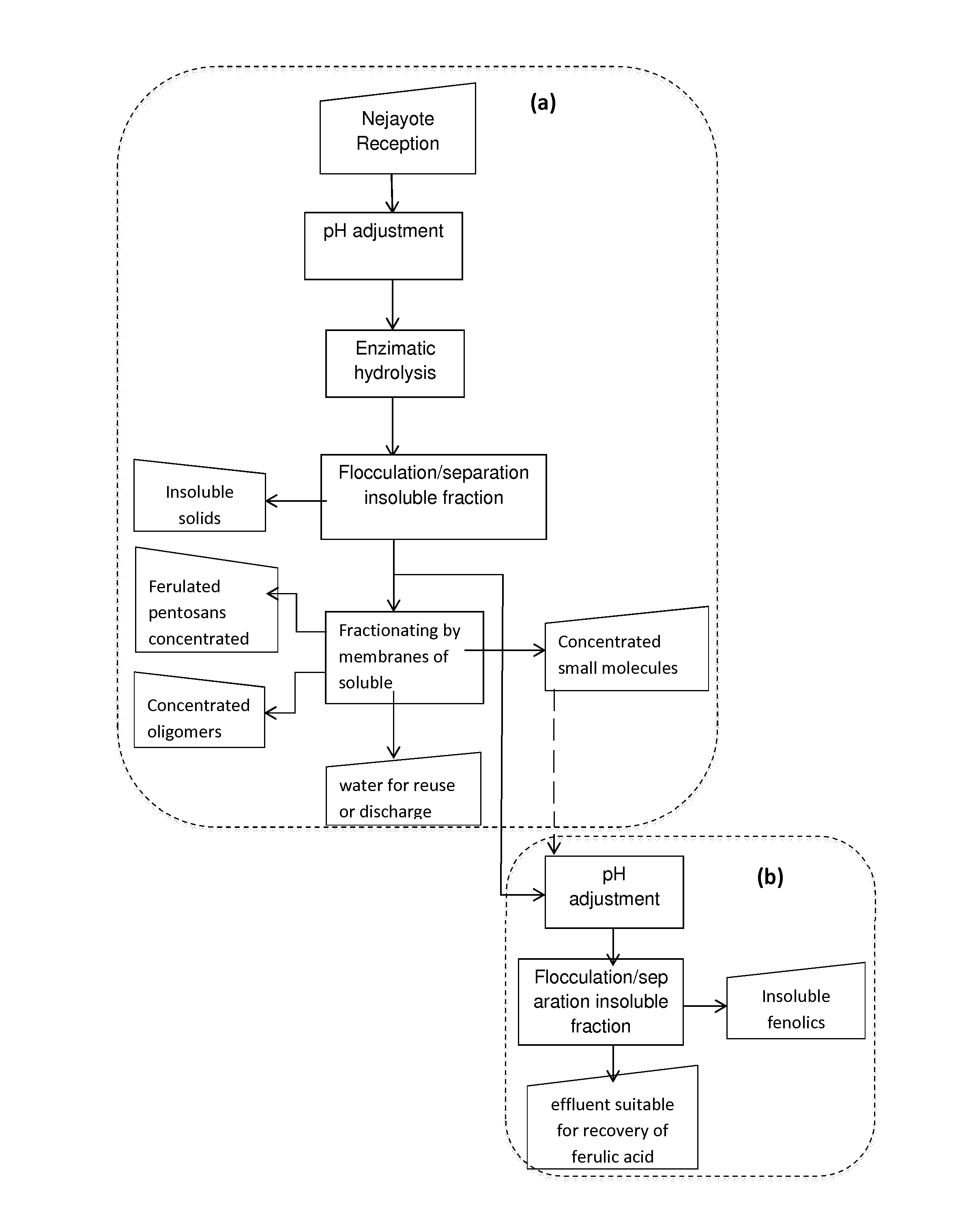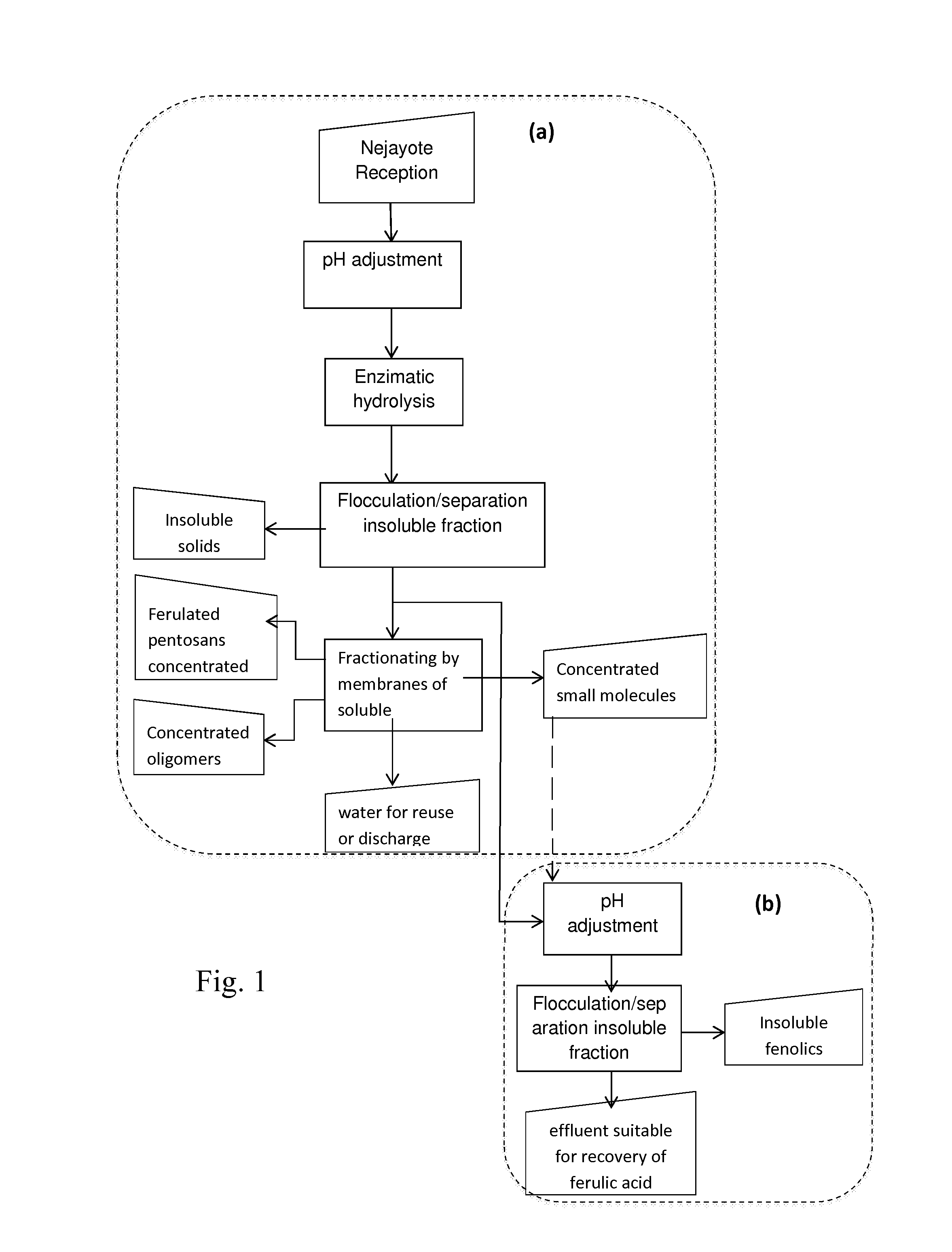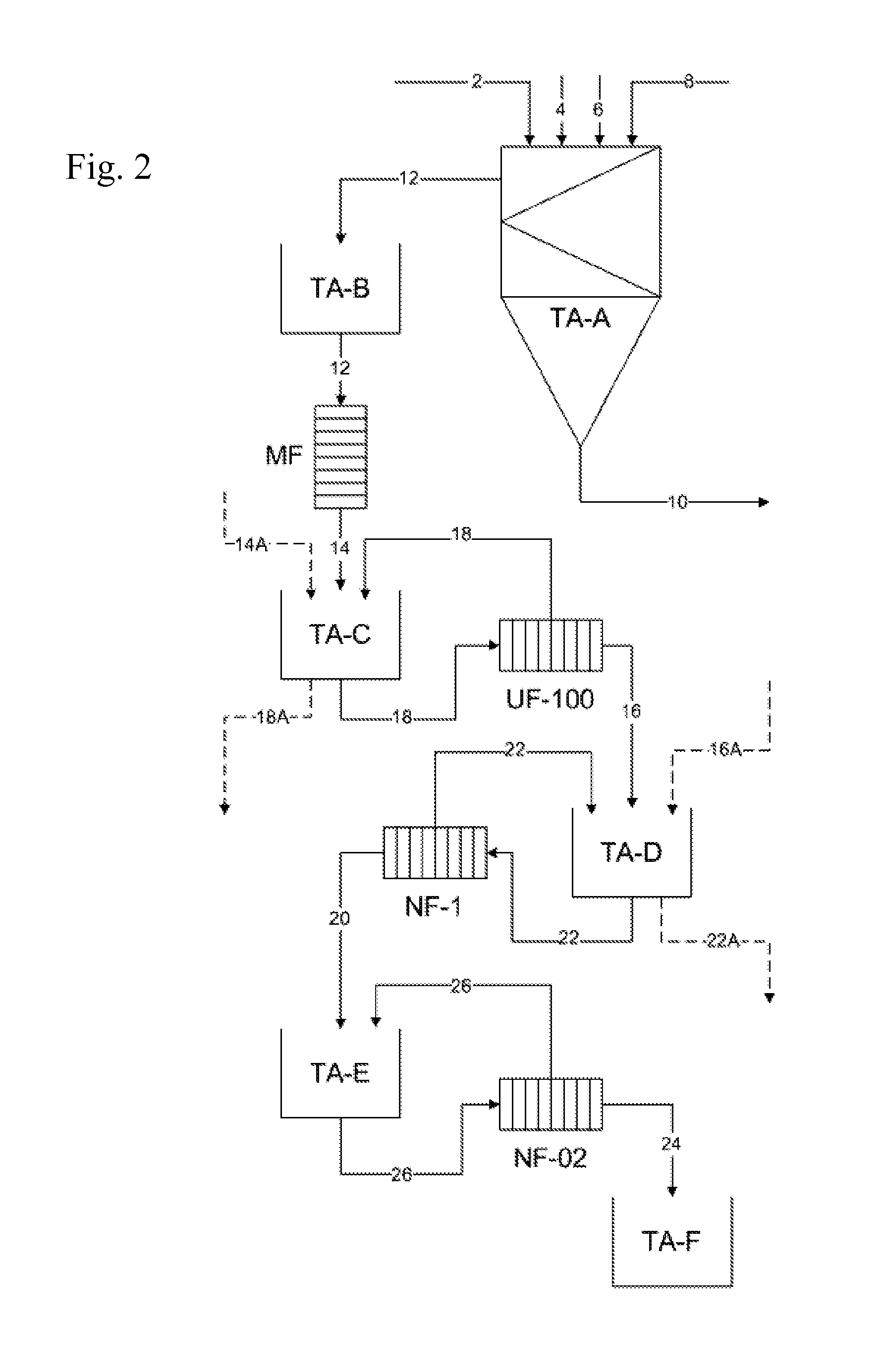Method and system for the integral treatment of wastewater from the maize industry
a technology of wastewater treatment and maize, applied in the direction of carboxylic compound separation/purification, food waste water treatment, separation process, etc., can solve the problems of difficult conventional treatment of nejayote effluent, high contaminant effluent of nejayote, and high cost of nejayote treatment,
- Summary
- Abstract
- Description
- Claims
- Application Information
AI Technical Summary
Benefits of technology
Problems solved by technology
Method used
Image
Examples
example 1
[0036]Glass beakers with 500 mL of nejayote were prepared, with an initial pH value of 12 that was immediately adjusted to the pH value required for each of the treatments. Five treatments and an absolute control were applied, and after 30 minutes, the following response variables were measured: total suspended solid particles (TSS) in the supernatants, volume of the precipitated flocs (V) and the maximum volume (Vmax) that can be filtrated in 15 minutes through a 0.45 mm-cut, 4.5 cm-diameter nitrocellulose membrane, and applying vacuum of 400 mbar. Treatment 1 corresponds to the method described in patent application MX / a / 2013 / 000943 using phosphoric acid, an amylase of fungal origin and a polyacrylamide flocculant. Treatment 2 corresponds to a modality of the method of the present invention, using sulphuric acid, an amylase of bacterial origin and clay as flocculant. Treatment 4 corresponds to a modality of the method of the present invention, using citric acid, an amylase of bact...
example 2
[0038]In order to evaluate the effect of the methods of total suspended solid particles (TSS) of nejayote over the percentage of recovery of material in the different steps of ultra / nanofiltration used in the system, 2 L aliquots of SST-free nejayote were used, which were obtained by two methods: 1) the method described in application MX / a / 2013 / 000943 (acidic conditions, pH 5.0) and 2) method described in the present invention (alkaline conditions, pH 7.2). The matter balancing was done considering the content of the soluble solids of membrane influents, the permeates, filtration rejections and the volumes of each of them.
Matter Balancing (% of recovery)MembraneAcidic contitionsAlkaline conditions30 KDa 90965 KDa75951 KDa70100
[0039]With the membranes of lower effective molecular cut, the percentage of matter recovery was inferior to 76%, showing a high retention of the soluble solids in the membranes' materials, possibly from physical or chemical adsorption.
example 3
Clarification
[0040]Nejayote volume=10 L
[0041]Material in solution=11.7 g / L
[0042]Phenolic compounds in solution=1.2 g / L
[0043]Suspended materials=2250 ppm
[0044]Nejayote adjusted pH value=7.3
[0045]Nejayote initial temperature=72° C.
[0046]Volume of bacterial amylases added=1 mL
[0047]Incubation time=10 min
[0048]Final content of polyacrylamide flocculant=20 ppm
[0049]Suspended solid particles in clarified nejayote=21 ppm
[0050]Sludge volumen in hydrosedimenter=350 mL
[0051]Content of solid in sludge=64 g / L
[0052]Q=10 L / h
[0053]Filtrating area=95 cm2; 20-25 μm pore
[0054]Suspended solid particles in clarified / filtrated nejayote=2 ppm
[0055]Solid particles in solution in clarified / filtrated nejayote=9.5 g / L
[0056]Phenolic compounds in solution=1.2 g / L
[0057]Molecular weight effective cut=100 KDa; area=929 cm2
[0058]Permeate=95% of Q=1.8 L / h, containing 8.5 g / L de soluble solids, of which 12% are free and glycosylated phenolic compounds, 14% of carbohydrates containing g...
PUM
| Property | Measurement | Unit |
|---|---|---|
| molecular weight | aaaaa | aaaaa |
| molecular weight | aaaaa | aaaaa |
| molecular weight | aaaaa | aaaaa |
Abstract
Description
Claims
Application Information
 Login to View More
Login to View More - R&D
- Intellectual Property
- Life Sciences
- Materials
- Tech Scout
- Unparalleled Data Quality
- Higher Quality Content
- 60% Fewer Hallucinations
Browse by: Latest US Patents, China's latest patents, Technical Efficacy Thesaurus, Application Domain, Technology Topic, Popular Technical Reports.
© 2025 PatSnap. All rights reserved.Legal|Privacy policy|Modern Slavery Act Transparency Statement|Sitemap|About US| Contact US: help@patsnap.com



